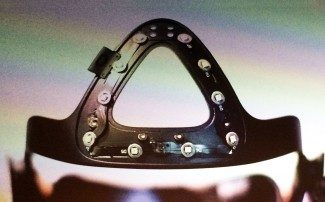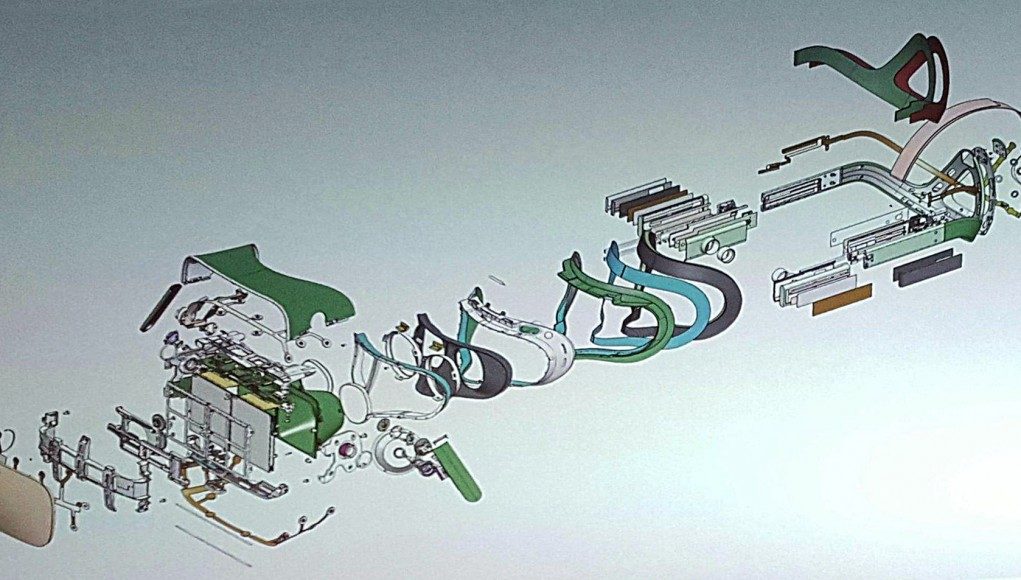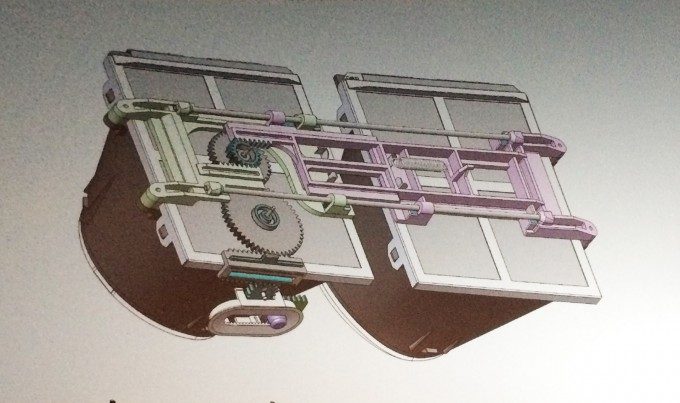In a session at day 1 of Connect, Oculus’ Caitlin Kalinowski and Stephanie Lue took to the stage to speak about the challenges associated with making the Oculus Rift a mass-producible product.
While the Rift Crescent Bay prototype, revealed by Oculus last year at Connect, is feature-similar to the Rift CV1, they are two completely different products from a manufacturing perspective. Crescent Bay was a prototype made in limited quantities, likely largely assembled by hand. Teams at Oculus had to take the prototype and its features and turn it into something that could be built on a massive scale.
That’s where Caitlin Kalinowski, Product Design Engineering Manager, and Stephanie Lue, Hardware Program Management Manager at Oculus come in. The duo tag teamed the presentation at Connect titled ‘Shipping Hardware: The Evolution of the Rift’, where they spoke to the challenges of making a manufacturable Rift headset.
The pair shared that each Rift CV1 production unit has 200-300 individual custom made parts that go into the manufacturing and assembly process. And exploded view of the headset shows just how complex the Rift VR headset really is under the unique fabric that encloses it.
 Speaking of fabric, Kalinowski and Lue hammered home the challenges of integrating fabric into the device. “It’s almost without precedent to take 2D fabric and integrate it with high tech,” Lue said, likening the issue to trying to wrap a blown-up beach ball with wrapping paper, but doing so without any wrinkles.
Speaking of fabric, Kalinowski and Lue hammered home the challenges of integrating fabric into the device. “It’s almost without precedent to take 2D fabric and integrate it with high tech,” Lue said, likening the issue to trying to wrap a blown-up beach ball with wrapping paper, but doing so without any wrinkles.
See Also: A Look Under the Hood of the Oculus Rift Revealed in New Photos

The fabric and tech industries, as Lue explained, don’t often work closely together, so Oculus was met with some confusion when asking about very particular fabric parameters that were important to the Rift, like IR light transparency.
“It’s two industries with very little cross section and we had to get them to talk in the same language,” Lue said.
Also seen during the session was an inside look at some of the Rift’s complex mechanical parts like the IPD adjustment mechanism which moves both the screens and the lenses to adjust for the varying distances between each user’s’ eyes. Their goal was to accomodate from the 5th to the 95th percentile of human IPD (male and female included).
Kalinowski stressed the challenge of taking a feature (like IPD adjustment) and making it into a reality. It requires the prototyping of various solutions, all of which have to fit within the broader picture of the Rift. “You can’t optimize for a single feature,” she said.
 She showed a photo of the very first IPD adjustment prototype mechanism where you can see a central dial which, when turned, would move sliders (upon which the screen and display assemblies would be mounted) closer together or further apart to symmetrically adjust for IPD.
She showed a photo of the very first IPD adjustment prototype mechanism where you can see a central dial which, when turned, would move sliders (upon which the screen and display assemblies would be mounted) closer together or further apart to symmetrically adjust for IPD.
But the mechanism would evolve greatly by the time it was integrated into the production version of the Oculus Rift. The final IPD adjustment mechanism was shown, which Kalinowski described as a “drive train,” which is adjusted by a slider rather than a dial.
By the end of the talk the duo instilled confidence in the crowd that they were well on track to ship large quantities of the Rift headset by the Q2 2016 release date set forth previously by the company.








